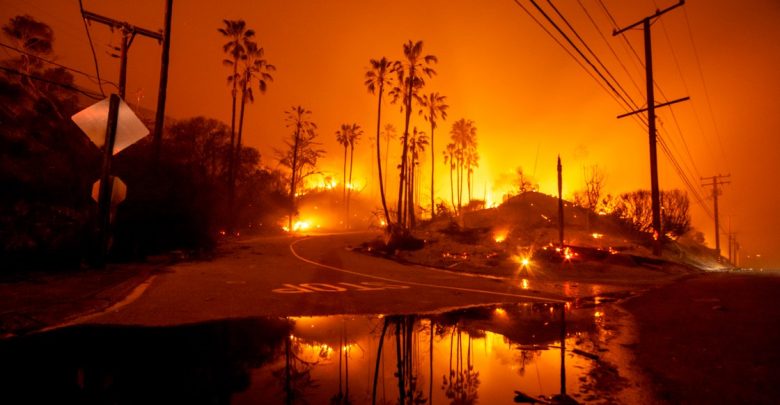There are three wildfires currently burning in California that are now into their 2nd week raging across the state.
Last week it was estimated that the Camp Fire in Northern California spread at more than a football field a second, or around 80 football fields per minute. In one day it had burned through 20,000 acres and by Friday, it had consumed over 70,000 acres.
The Woolsey Fire in Ventura and Los Angeles counties doubled in size in under 90 minutes, while the Hill Fire in Ventura County burned thru 10,000 acres in six hours.
While the causes are still unknown, it s clear these fires are moving at record speeds and making it both difficult and dangerous for fire fighters. Early on the decision was made to preserve life over property and focus on getting residents out of harms way. That decision has probably saved many lives, despite the known casualties.
Why are the fires moving so quickly?
In SoCal, a combination of strong offshore winds that have been gusting over 110 kph, low humidity and extremely dry conditions are leading to the perfect conditions for these wildfires
In Northern California, a classic offshore flow has been set up that mimics the Santa Ana winds. Another year with low precipitation has led to the extremely dry conditions.
Though the drought in California has lessened somewhat, the state is still abnormally dry overall. More than half the state is in a moderate drought or worse and 18% of the state, including the area near the Woolsey fire, is in severe drought, according to the US Drought Monitor. Over the past month, much of the state has received less than 5% of its normal rainfall.
The terrain also makes it hard for firefighters. The fire that broke out Friday near the Los Angeles Zoo and Botanical Gardens occurred on a steep hillside that could not be accessed by firetrucks, so firefighters had to approach the fire on foot, CNN affiliate KCBS reported. The canyons can accelerate fires. They act as funnels for the wind, which pushes already heated air upward.
While it is premature to determine the causes and steps needed to prevent and manage future wildfires, there are some actions or inaction that the state needs to address.
In April of 2017, the Governor declared the state's drought emergency was over. The result was a cut of 115.8 million from the Drought Response budget. Of that approximately 97.5 million was cut for Emergency Forestry and Fire Protection response.
With the State of California estimated debt to be 1.3 Trillion, that's with a T, cuts to services are inevitable, and elected representatives determine where to make these cuts.
The state government also reduced the the forest budget for dead tree removal and Emergency Water Tank Program from 52.7 million to 8.5 million. Estimates are that it costs about $1000 to remove a dead tree from the forest, that inevitably results in a lot of dead trees to remain in place. Dead trees and dry brush are the fuel that these wildfires thrive on.
Since the government has cut the the fire budget by over 100 million, the acres burned has increased from a 5 year YTD average of 231,000 acres to over 620,000 acres. This year there were 345 more forest fires than the YTD average for the past 5 years.
While these cuts are not to blame for the wildfires, entirely, the impact of the cuts clearly have added to the intensity and devastation caused by the fires. These cuts were referred to by the President in a recent tweet, that although ill timed and perhaps poorly worded, apparently shocked the media and outraged the California government. Cuts to essential services have consequences.
It is evident that with the massive debt California faces that further cuts to services are inevitable. It is time for Californians to ensure that essential services like fire and safety are prioritized and State officials understand the need for keeping these services funded and running. Lives depend on it.
If not, this time next year one should expect many areas of California will become essentially uninhabitable. Not a desired outcome for anyone who lives there.
We hope those who are missing are reunited with their families, safe and sound, and that those who risk their lives to get these wildfires under control remain safe.










